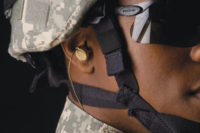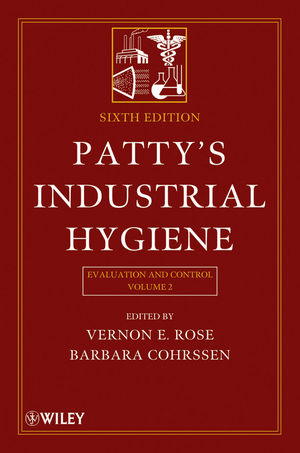Hearing conservation program checklists abound on the Internet and in hearing conservation literature.1-4 Checklists designed for specific processes have also been established for audiometric monitoring. In Part I of this article series, it was shown how the expanded use of checklists in other areas, such as fitting earplugs, could become more relevant as additional functionality has created an increase in complexity. Examples and the virtues of a stratified checklist for overall program evaluation will be the subject of this article.
Program evaluation
Quantitative measures of standard threshold shift (STS) and noise measurements are used for evaluating program effectiveness, but do not provide qualitative information about the processes that contributed to these data outcomes.
Most checklist questions for hearing conservation programs have a yes-or-no format about the presence of a program process or element. If answers to a question included a stratified format, a program manager could evaluate different levels of compliance or program implementation within a process. One version has been developed for the U.S. Army.5 The US Army Hearing Conservation Profile is a detailed checklist that includes 16 questions designed to identify areas of program strength and target areas for improvement. Histograms of the scoring levels of the 16 areas evaluated can provide an effective visual for presentations. They can also assist managers in setting goals, in monitoring program performance and helping to maintain an historical account of program performance.5
Space limits a complete listing of all 16 questions and, unfortunately, military website restrictions preclude a reference to access. Three of the 16 questions and implementation levels in areas of hazard posting, engineering noise controls and hearing protection are included below for a general sense of this concept. Most military unique references have been deleted and minor reconstruction of some levels was necessary to demonstrate this concept for private sector application. Each level should be understood to contain all positive factors in the level below it.
1) At what level
(1, 2, 3, 4 or 5) are noise hazards posted?
Level 1 – Posting is almost nonexistent.
Level 2 – Some posting is evident, but decals and signs are faded and/or obscured from view.
Level 3 – All areas and equipment are posted with caution or danger signs that describe the potential hazard and measures to be taken. Signs are highly visible and positioned at entrances and on the periphery of potential noise-hazardous areas. The Occupational Noise Exposure Standard and Hearing Conservation Amendment are posted in all potential noise-hazardous areas. Applicable 85 dBA and 140 dBP contours are established.
Level 4 – All decals and signs conform to Safety Color Markings, Signs and Tags Information Guide. Noise contours include double and single hearing protection demarcations. Signs are inspected periodically and routinely updated.
Level 5 – The Global Information System or equivalent tool is used to develop color-coded noise maps. Employees are provided noise maps of their areas.
2) At what level (1, 2, 3, 4 or 5)
are engineering noise controls implemented for new equipment
or new facilities?
Level 1 – Engineering controls are limited to plans for the routine maintenance of new equipment and facilities.
Level 2 – Some specifications for new equipment and facilities have considered noise performance requirements, but the language is vague and generally ineffective.
Level 3 – Specific noise performance criteria, e.g., 80 dBA or less at the operator’s head position, are included in specifications for new equipment or facilities. The overall program tolerates occasional deviations.
Level 4 – Few noise hazards exist among new purchases and facilities. Industrial Hygiene personnel evaluate all new equipment and facilities after purchase.
Level 5 – An aggressive “buy quiet” program is in effect. Management provides financial incentives (e.g., budgets are increased up to 10 percent for purchases of quieter equipment). Noise hazard abatement is an element in the performance standards of procurement personnel.
3) At what level (1, 2, 3, 4 or 5) is hearing protection available?
Level 1 – Hearing protection availability is limited or non-existent in potential noise-hazardous areas. Instances of personnel being charged for hearing protection or individuals having to purchase their own hearing protection are evident. Hearing aids in the vented or the “on mode” or ear muffs with built-in radios designed for recreational listening are used in place of or with approved hearing protectors.
Level 2 – Approved hearing protectors are available; however, preformed (sized) earplugs are primarily maintained in noise-hazardous areas, but not all sizes are available. Choices from approved hearing protectors are limited by incomplete inventories.
Level 3 – All sizes of preformed earplugs are maintained in sufficient inventories at medical locations and are issued with carrying cases. Approved foam earplugs and ear muffs are available in potential noise-hazardous areas. There is freedom of choice from approved hearing protectors unless medically or environmentally contraindicated. Personnel working or visiting designated noise-hazardous areas have hearing protection with them at all times.
Level 4 – Replacement ear cushion seals are available in noise-hazardous areas. Individuals with special needs as the result of ear surgery or being a sizing outlier are accommodated.
Level 5 – User considerations of comfort, ease of use, compatibility with other equipment and communication requirements are given equal weight to noise reduction characteristics in the selection and availability of hearing protectors.
The descriptors listed above are intended as brief illustrations of a program’s functional level. Professional judgment is used in determining the response level. The response level that “best fits” may not always match the facility or workplace exactly or in literal detail.5
Conclusions
Checklists could help institutionalized program processes and make hearing conservation programs less personality driven. They are not a silver bullet or a substitute for a dedicated and well-trained staff, but rather a tool for dealing with complexity and human frailty that will always be with us.
References
1. J. D. Royster and L. H. Royster, “Hearing Conservation Programs: A Practical Guide to Success,” Lewis Publishers, Inc., Chelsea, Michigan, 1990.
2. http://www.azrisk.state.az.us/UserFiles/PDF/checklists/Hearing%20Conservation%20Checklist.pdf
3. http://www.cdc.gov/niosh/topics/noise/hearingchecklist.html
4. http://www.purdue.edu/rem/home/booklets/HCP.pdf
5. The US Army Hearing Conservation Data Profile was based on a commercial software application that is not available to reference.


